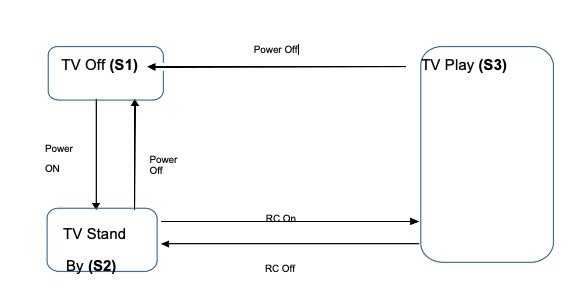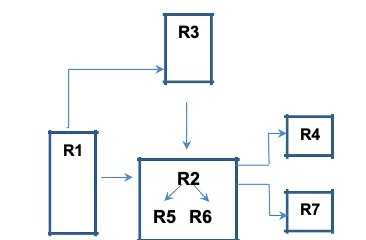CTFL 2018 Sample Exam A v 1.6
Match the following test work products (1-4) with the right description (A-D).
- Test suite
- Test case
- Test script
- Test charter
- A set of test scripts to be executed in a specific test run
- A set of instructions for the execution of a test
- Contains expected results
- Documentation of test activities in session-based exploratory testing
You will be invited to a review. The work product to be reviewed is a description of the in-house document creation process. The aim of the description is to present the work distribution between the different roles involved in the process in a way that can be clearly understood by everyone.
You will be invited to a checklist-based review. The checklist will also be sent to you. It includes the following points:
- Is the person who performs the activity clearly identified for each activity?
- Are the entry criteria clearly defined for each activity?
- Are the exit criteria clearly defined for each activity?
- Are the supporting roles and their scope of work clearly defined for each activity?
In the following we show an excerpt of the work result to be reviewed, for which you should use the checklist above:
"After checking the customer documentation for completeness and correctness, the software architect creates the system specification. Once the software architect has completed the system specification, he invites testers and verifiers to the review. A checklist describes the scope of the review. Each invited reviewer creates review comments - if necessary - and concludes the review with an official review done-comment."
Which of the following statements about your review is correct?
The following statement refers to decision coverage:
“When the code contains only a single ‘if’ statement and no loops or CASE statements, and its execution is not nested within the test, any single test case we run will result in 50% decision coverage.”
Which of the following statement is correct?
An employee’s bonus is to be calculated. It cannot be negative, but it can be calculated down to zero. The bonus is based on the length of employment:
- less than or equal to 2 years
- more than 2 years but less than 5 years
- 5 to 10 years inclusively
- longer than 10 years
What is the minimum number of test cases required to cover all valid equivalence partitions for calculating the bonus?
A speed control and reporting system has the following characteristics:
- If you drive 50 km/h or less, nothing will happen.
- If you drive faster than 50 km/h, but no more than 55 km/h, you will be warned.
- If you drive faster than 55 km/h but not more than 60 km/h, you will be fined.
- If you drive faster than 60 km/h, your driving license will be suspended.
- The speed in km/h is available to the system as an integer value.
Which would be the most likely set of values (km/h) identified by applying the boundary value analysis, where only the values on the boundaries of the equivalence classes are selected?
A company's employees are paid bonuses if they work more than a year in the company and achieve a target which is individually agreed before.
These facts can be shown in a decision table:
|
Test-ID |
|
T1 |
T2 |
T3 |
T4 |
|
Condition1 |
Employment for more |
YES |
NO |
NO |
YES |
|
|
than 1 year? |
|
|
|
|
|
Condition2 |
Agreed target? |
NO |
NO |
YES |
YES |
|
Condition3 |
Achieved target? |
NO |
NO |
YES |
YES |
|
Action |
Bonus payment |
NO |
NO |
NO |
YES |
Which of the following test cases represents a situation that can happen in real life,and is missing in the above decision table?
Which of the following statements about the given state transition diagram and table of test cases is TRUE?

|
Test Case |
1 |
2 |
3 |
4 |
5 |
|
Start State |
S1 |
S2 |
S2 |
S3 |
S3 |
|
Input |
Power On |
Power Off |
RC On |
RC Off |
Power Off |
|
Expected Final State |
S2 |
S1 |
S3 |
S2 |
S1 |
A video application has the following requirement: The application shall allow playing a video on the following display resolution:
- 640x480
- 1280x720
- 1600x1200
- 1920x1080
Which of the following list of test cases is a result of applying the equivalence partitioning test technique to test this requirement?
The project develops a "smart" heating thermostat. The control algorithms of the thermostat were modeled as Matlab/Simulink models and run on the internet connected server. The thermostat uses the specifications of the server to trigger the heating valves.
The test manager has defined the following test strategy/approach in the test plan:
- The acceptance test for the whole system is executed as an experience-based test.
- The control algorithms on the server are checked against standard of the energy saving regulation.
- The fun
ctional test of the thermostat is performed as risk-based testing. - The security tests of data / communication via the internet are executed together with external security experts.
What four common types of test strategies/approaches did the test manager implement in the test plan?
As a test manager you are responsible for testing the following parts of requirements:
R1 - Process anomalies
R2 - Synchronization
R3 - Approval
R4 - Problem solving
R5 - Financial data
R6 - Diagram data
R7 - Changes to the user profile
Notation: Logical requirement dependencies (A -> B means, that B depends on A)

Which one of the following options structures the test execution schedule according to the requirement dependencies?
You are testing a new version of software for a coffee machine. The machine can prepare different types of coffee based on four categories. i.e., coffee size, sugar, milk, and syrup. The criteria are as follows:
Coffee size (small, medium, large)
Sugar (none, 1 unit, 2 units, 3 units, 4 units)
Milk (yes or no)
Coffee flavor syrup (no syrup, caramel, hazelnut, vanilla)
Now you are writing a defect report with the following information:
Title: Low coffee temperature.
Short summary: When you select coffee with milk, the time for preparing coffee is too long and the temperature of the beverage is too low (less than 40 °C).
Expected result: The temperature of coffee should be standard (about 75 °C).
Degree of risk: Medium
Priority: Normal
What valuable information was omitted in the above defect report?